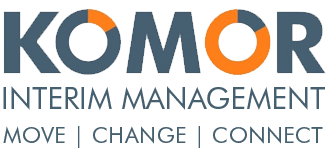FOCUSING ON INNOVATION: COMPARING PAUL COOK AND CLAYTON CHRISTENSEN
Today I would like to take you on an exciting journey through the world of innovation, comparing the strategies of two outstanding innovators: Paul Cook, the visionary founder of Raychem, and Clayton Christensen, the brilliant thinker behind the concept of disruptive innovation.
Some of you may remember that I spent some time at Raychem for a while straight out of university. It was an incredibly exciting and formative time. I had the privilege of meeting Paul Cook in person – an encounter I will never forget. His trademark bow tie, his visionary spirit and the way he transformed Raychem into a global leader in technology-intensive products left a deep impression on me.
In this article, I contrast Cook’s approach to continuous, incremental innovation and technology mastery with Christensen’s disruptive innovation model. While Cook focused on continuous improvement and adaptation, Christensen emphasises that radical, disruptive ideas can revolutionise entire markets. Embark on this fascinating journey through the world of innovation and delve deeper into the strategies of these two giants of innovation. I hope this article provides valuable insights and inspiration for your own innovation efforts.
Innovation is a critical factor in the success and longevity of businesses. It drives the development of new products and services, enables companies to survive in competitive markets and can even be the basis for entering new markets. But what’s the best way to approach innovation? In this article, we take a closer look at the innovative strategies and philosophies of two remarkable individuals: Paul Cook, founder and CEO of Raychem, and Clayton Christensen, renowned economist and author.
PAUL COOK AND THE RAYCHEM MODEL OF INCREMENTAL INNOVATION
Paul Cook founded Raychem Corporation in 1957 and led it to impressive growth and success. Under Cook’s leadership, Raychem focused on mastering core technologies and developing thousands of proprietary products based on those technologies. This strategy enabled the company to gain strong market share in several industries, selling more than 50,000 products and generating more than $1 billion in annual sales.
Raychem’s innovation extends beyond products. In fact, the company is in the process of reinventing itself. In its first 25 years, Raychem experienced explosive growth (averaging 25% per year) as it realised the global potential of its products. Since the early 1980s, Raychem has worked to develop new core technologies and position itself in new markets.
CLAYTON CHRISTENSEN AND THE THEORY OF DISRUPTIVE INNOVATION
In contrast, Clayton Christensen has proposed a different approach to innovation. Known for his theory of disruptive innovation, Christensen argues that incumbents are often “disrupted” or displaced by newer firms that offer simple, convenient, and often cheaper products or services that initially meet the needs of marginal customers. Over time, these disruptors improve their offerings and attract more customers, eventually leading to the demise of the incumbents.
Comparison of the two approaches
| Paul Cook (Incremental Innovation) | Clayton Christensen (Disruptive Innovation) | |
| Focus | Developing and perfecting core technologies and creating proprietary products based on these technologies. | Introduction of simple, convenient and often cheaper products or services that initially fulfil the needs of marginal customers and improve over time. |
| Innovation level | Company or product level. | Market or industry level. |
| Result | Strong market position and high profit margins through the supply of specialised, technology-intensive products that often have no direct competitors. | Displacement of established companies through the gradual improvement and expansion of products or services that are initially simpler and cheaper. |
| Risks | High investments in research and development; risk of failure in the development of new technologies or products; risk of overextension due to too many product lines. | Risk of non-acceptance by the mass market; risk of rapid imitation by established companies; possible lack of resources compared to established companies. |
CONCLUSIONS AND IMPLICATIONS FOR MANAGERS AND INNOVATION MANAGERS
Both Paul Cook and Clayton Christensen offer valuable insights into how organisations can approach innovation. Please note that no one approach is universally applicable – the most effective innovation strategy will depend on a variety of factors, including the type of organisation, the industry in which it operates and the specific market conditions.
It can be helpful for managers and innovation managers to ask themselves the following questions:
- What are our company’s strengths and core technologies and how can we use them to develop innovative products (like Raychem)?
- Are there opportunities to introduce disruptive innovation into our industry by offering simple, convenient and low-cost products or services that can be improved over time (like Christensen’s suggestion)?
- How can we balance these two approaches to get the best of both worlds and make our business successful in both the short and long term?
Innovation is a complex process that requires both a thorough knowledge of one’s own strengths and capabilities and a deep understanding of the market. By studying the approaches and strategies of successful innovators such as Paul Cook and Clayton Christensen, we can gain valuable insights that can help us shape and refine our own innovation strategies.
Paul Cook
Paul M. Cook (1924 – 2020) was the founder and longtime CEO of Raychem Corporation, a company specialising in the supply of technology-intensive products to industrial customers in sectors such as aerospace, automotive, construction, telecommunications and utilities. Cook, a graduate of the Massachusetts Institute of Technology and former head of the Radiation Laboratory at the Stanford Research Institute, founded Raychem in 1957, and under his leadership the company pursued a consistent and ambitious strategy of mastering several core technologies and developing thousands of proprietary products based on those technologies. Cook was known for his signature bow tie and relentless spirit of innovation.
Here is an interesting interview with Paul Cook in the Harvard Business Review, March-April 1990 issue.
Clayton Christensen
Clayton M. Christensen (1952 – 2020) was an American economist and professor at Harvard Business School, best known for his theory of disruptive innovation. Christensen, who earned both an MBA and a PhD in business administration from Harvard Business School, introduced the term “disruptive technologies” in his best-selling book “The Innovator’s Dilemma”. His work argues that successful, established companies are often undermined by start-ups because they focus too much on existing customers and their current needs, neglecting new technologies and markets. Christensen was a thought leader in business strategy and innovation, influencing a generation of managers and entrepreneurs.
I SUPPORT YOU ON THE WAY TO YOUR SUCCESS
I am a strategist, an innovator, an unconventional thinker, a mover and shaker and therefore I do the right things sooner and better.
And with pleasure also for you.
Together we can discover new market opportunities, steer product branding into the right direction, understand your customers better – and stand out from the competition with tailor-made products for your target group. All this leads to more customer satisfaction, greater customer lifetime value and more sales potential.
Can you afford not to go for it?






